-
Car Reviews
- Car News
-
Car Comparisons
Latest comparisons
- Chasing Deals
Lexus lobs a cut-priced hybrid compact SUV as its new entry point to the brand. But does it stack up as a real Lexus?
At the launch of the new Lexus LBX hybrid, the brand made the point that its new small SUV is one of only two models to go by a three-letter acronym nameplate. The other (when not counting the ‘F’ branded performance variants of the past) is the revered LFA supercar.
So, the LBX – which Lexus refers to as ‘Lexus Breakthrough Crossover’ – is in good company.
And the brand has high ambition for the vehicle that it touts as a game-changer for merging compact size with big car luxury, especially at a time when other premium marques are abandoning the city car segment the newcomer slots into.
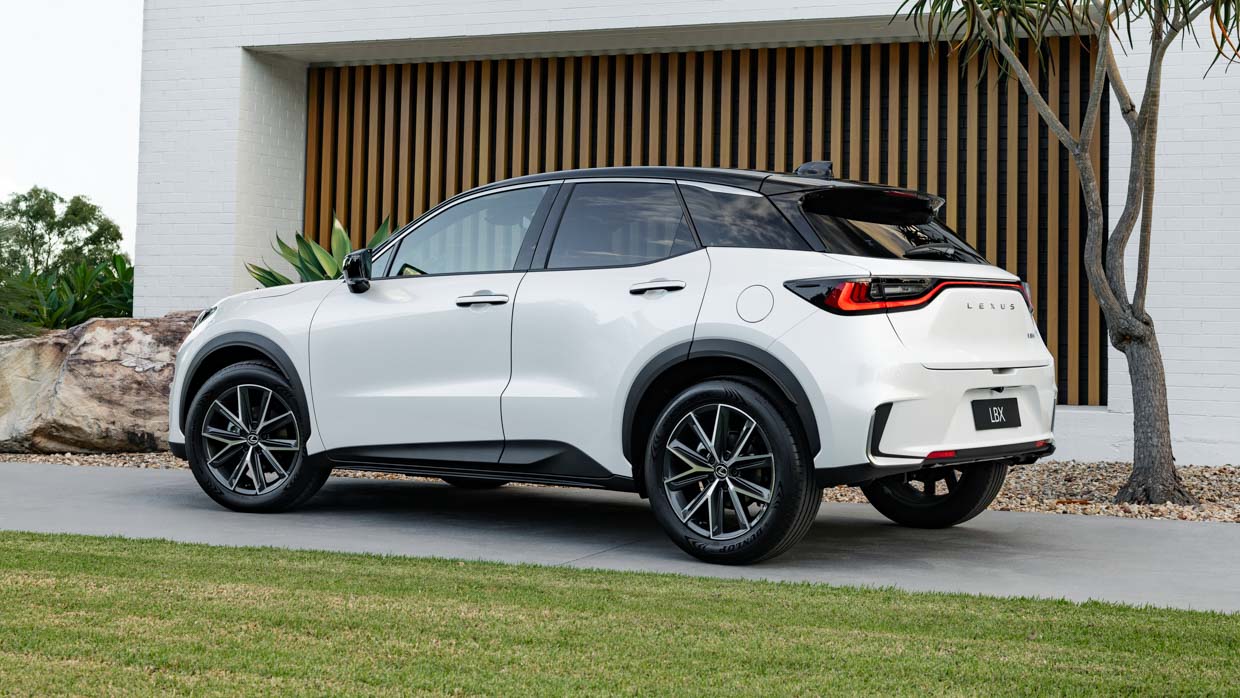
So, like the LFA regarded by some as one of the greatest supercars ever built, could this new compact SUV be a genuine breakthrough?
Unlike the LFA, the most expensive Lexus ever sold, the LBX debuts as the brand’s smallest and cheapest vehicle in Australia designed to lure younger consumers into the brand.
With that in mind, how does it go at being a premium compact SUV? And, most importantly for a vehicle that shares much of its underpinnings with the Toyota Yaris Cross, how does it go at doing all the things we expect a Lexus to do?
The Lexus LBX is available in three versions across two grades in Australia – the Luxury 2WD, Sports Luxury 2WD and Sports Luxury AWD.
The range kicks off at $47,550 for its entry-grade model, while the top-spec Sports Luxury is priced at $52,990 for the FWD and $56,990 in AWD guise. All prices are before on-road costs.
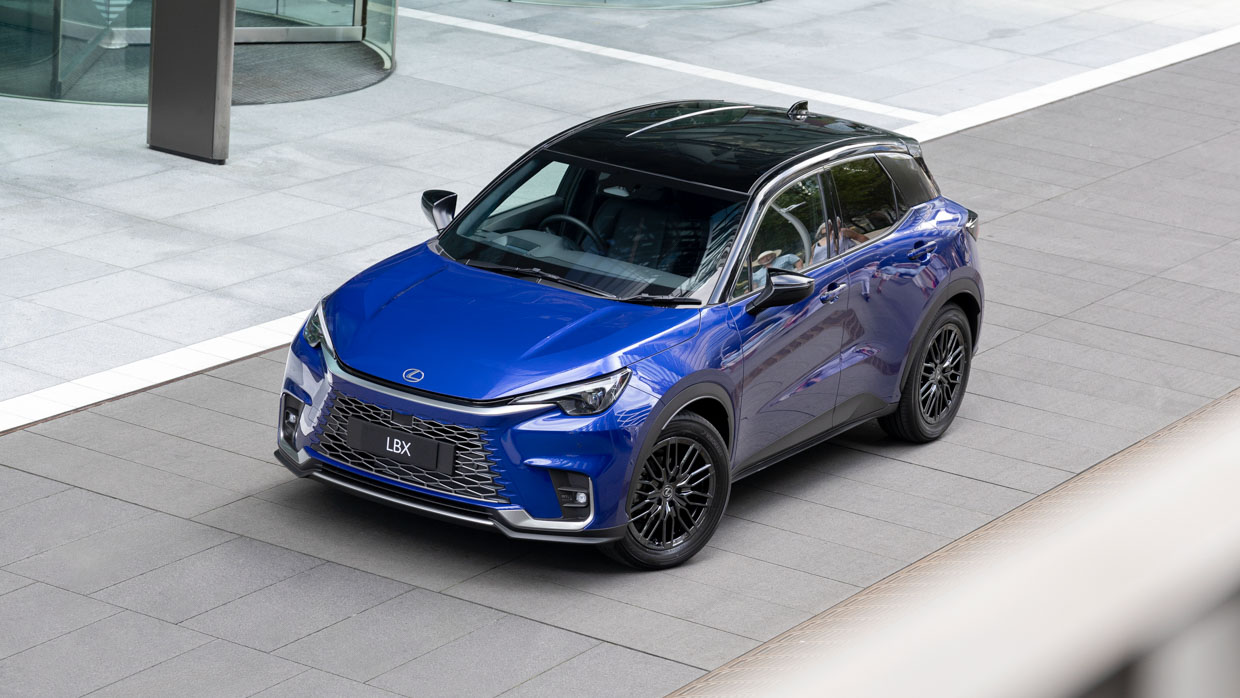
With the pure petrol variants of the Lexus UX having been discontinued, that means the LBX is by default the entry point into Lexus ownership in Australia.
It also means that you can step into Lexus ownership for a much cheaper price than the likes of BMW or Mercedes, for which you’d need a minimum of $54,800 and $61,900 respectively for the entry-level 118i and A200 hatches.
Unlike those cars, this is technically an SUV, though a small one at that. The LBX measures in at 4190mm in length, 1825mm in width and 1560mm in height, with a wheelbase of 1560mm.
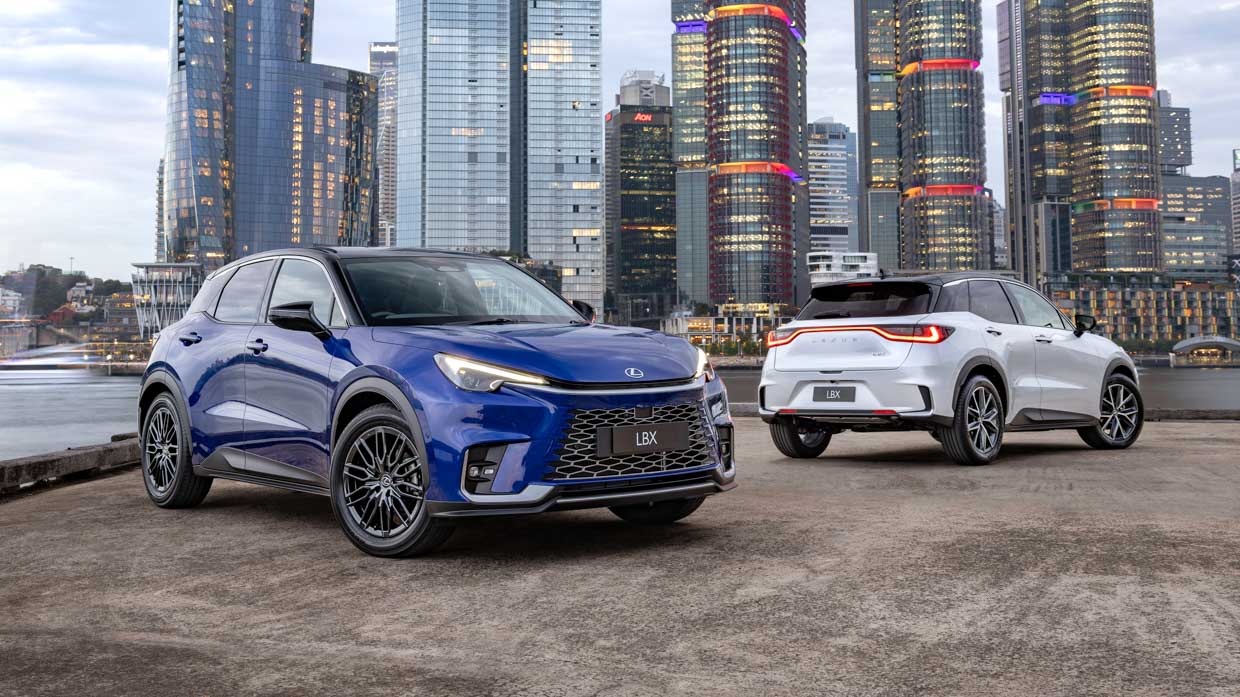
It’s a little bigger than the Yaris Cross and similar in size to an Audi Q2, but definitely smaller than a vehicle like the BMW X1, which has also grown over the years in a bid to bolster family appeal.
On the whole, the LBX has quite a handsome and elegant design, to this reviewer’s eyes at least. But it’s small and comes in on a budget.
So has Lexus had to make cuts to achieve the sub-$50K price proposition? And, given its size, is its asking price all that affordable anyway?
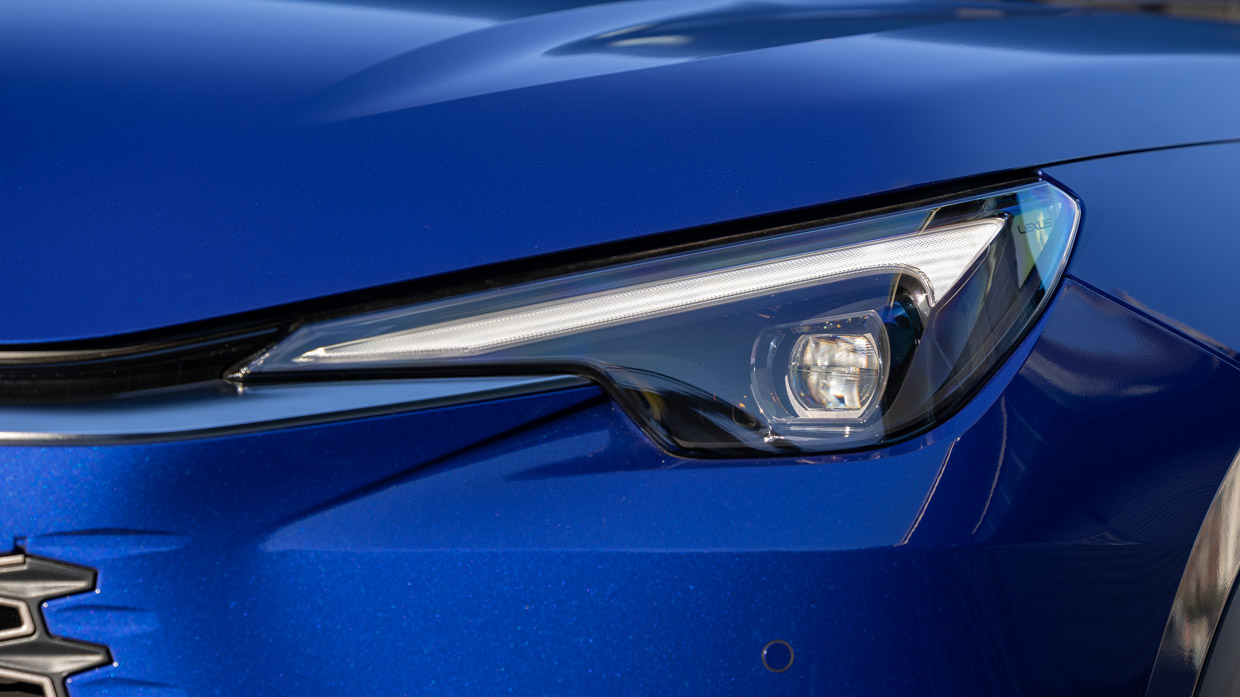
Buying into the entry-level Luxury will equip you with features such as:
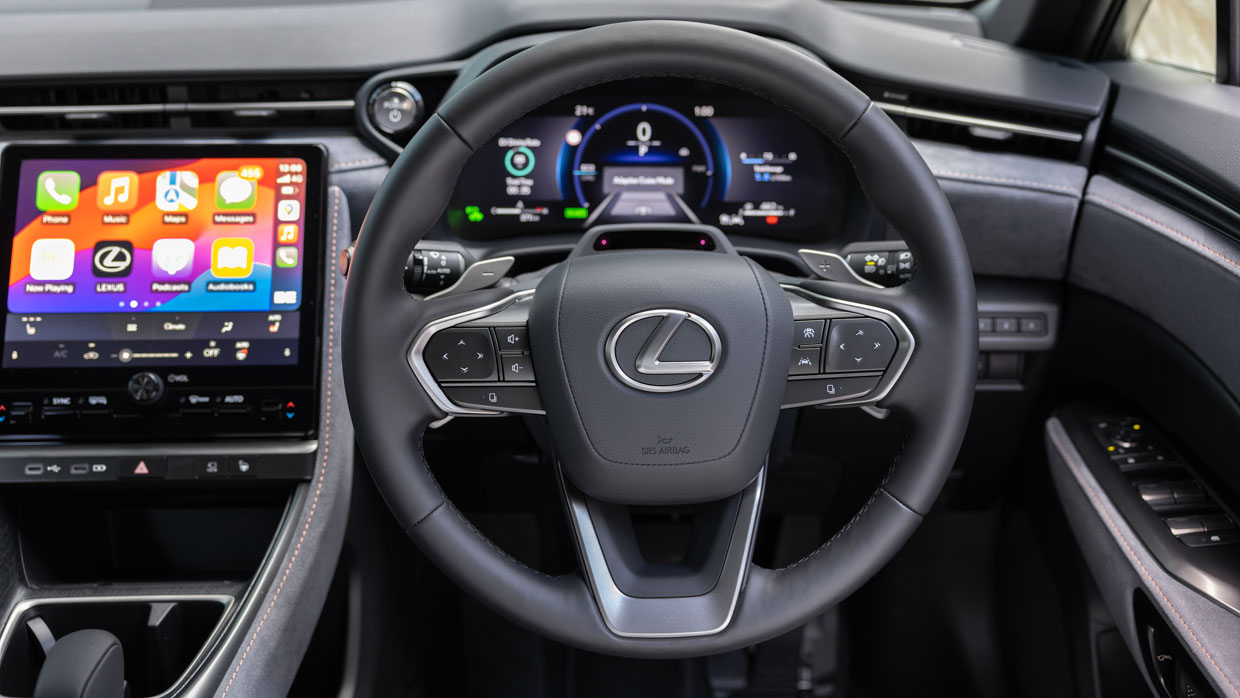
Stepping up to the Sports Luxury will score additional features like:
Some may question whether a small car below $50K can do an effective job of being a ‘Lexus’, especially considering the fact it shares its TNGA-B platform underpinnings with the Toyota Yaris Cross.
However, overall – at least on initial impression during our launch drive – Lexus seems to have done a great job at creating a small SUV with a premium feel befitting the badge.
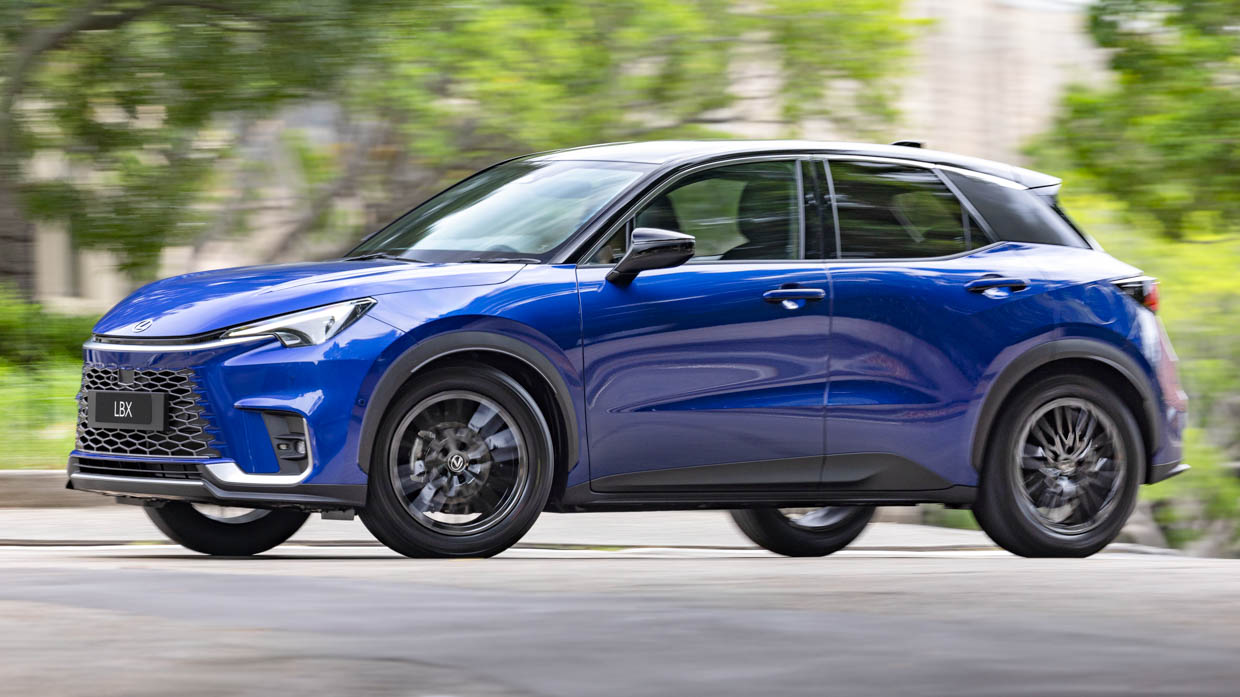
Under the bonnet is a hybrid powertrain that uses a 1.5-litre three-cylinder petrol engine delivering 67kW and 120Nm of torque. It’s paired with an electric motor at the front that delivers 69kW and 185Nm.
Total combined power outputs are 100kW. A total torque figure wasn’t provided with the launch literature.
All variants come with a CVT and while the Luxury spec is front-wheel-drive only, you can choose between front-wheel drive or all-wheel drive on the Sports Luxury.
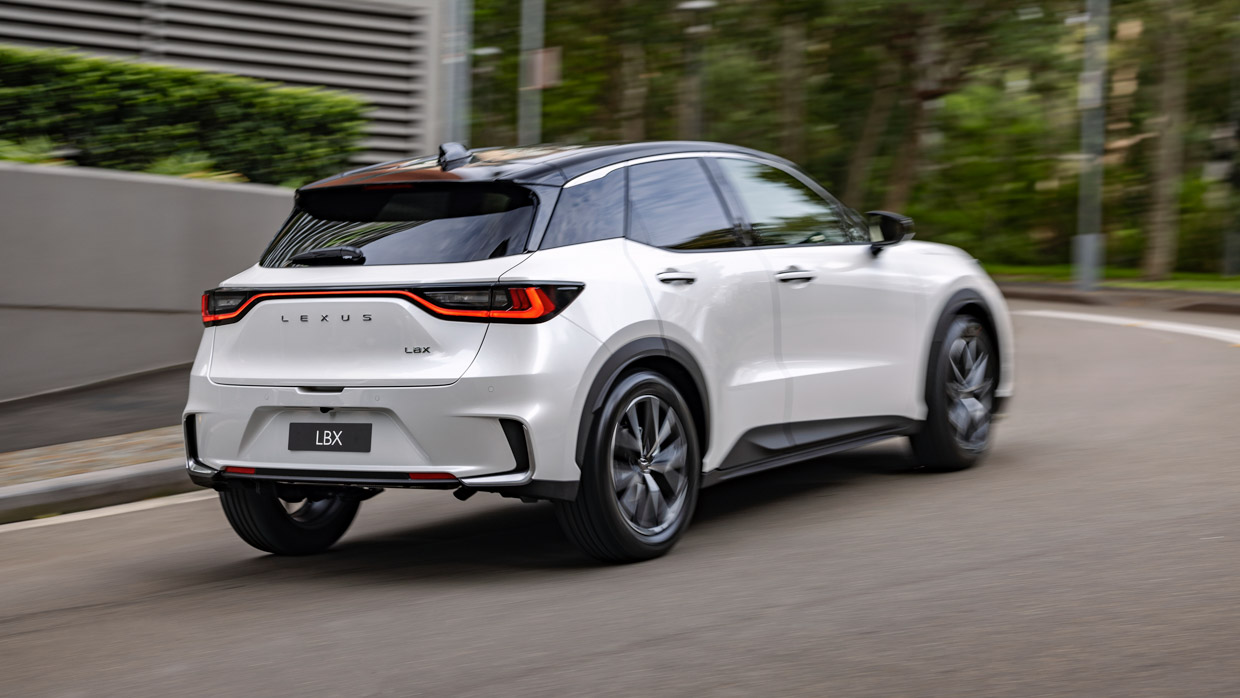
The all-wheel-drive variant adds an additional electric motor on the rear axle, producing 4.7kW and 52Nm. Combined power outputs of 100kW are unchanged if you go for all- or front-wheel drive.
As for the overall drive experience, the LBX felt like an easy and pleasant vehicle to drive during our launch experience.
Toyota and Lexus have become masters of their craft when it comes to hybrids and the LBX is no different – the petrol and electric motors working together in unison smoothly, making for a quiet and trouble free urban-commute.
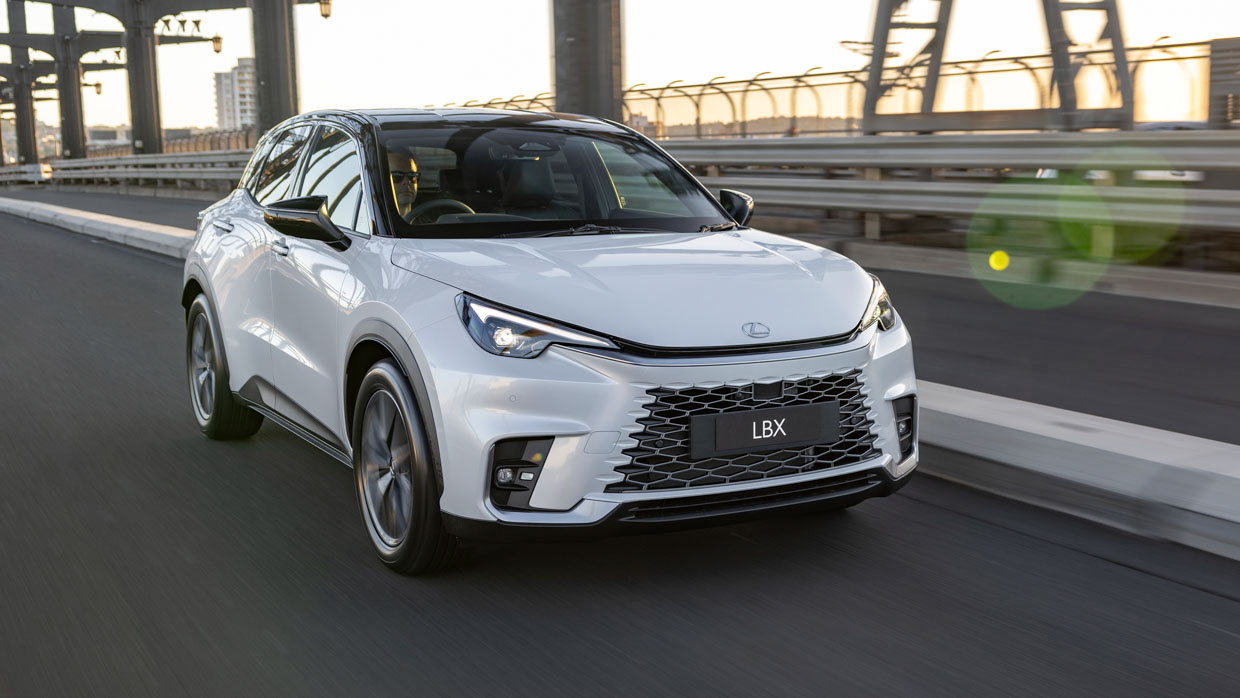
Power figures for the naturally aspirated hybrid-electric powertrain are modest and you do seem to feel that when you push the car beyond what’s required for the daily grind. It’s here where the CVT can be a bit loud and interfere with what otherwise seems like a refined experience overall.
Lexus claims 0-100km/h sprint times of 9.2 seconds for the front-wheel drive and 9.6 seconds for the all-wheel drive – so it’s not exactly the sprightliest vehicle out there.
However, for the most part, for what most buyer’s would likely be looking for in an urban runabout or second vehicle, the Lexus LBX seems to meet the brief nicely. Its compact size means it’s easy to navigate around town and park, and it’s a reasonably satisfying drive.
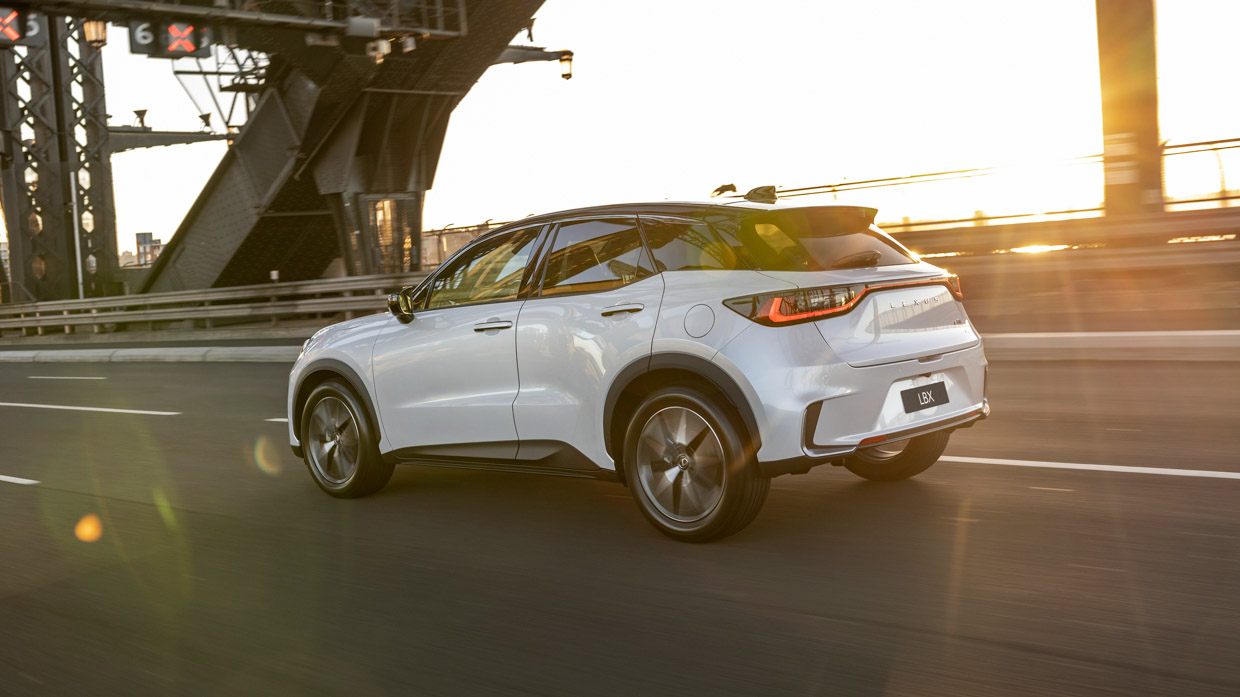
The steering felt direct and faithful to your inputs and the handling balance seemed to give hints of a relatively communicative chassis.
Granted, we didn’t get to push the car outside of its comfort zone, however Chasing Cars editor Tom Baker was able to experience the LBX on track last year and the general assessment was of a fun-to-drive vehicle.
With modest 100kW combined outputs coupled with a CVT that isn’t necessarily the most inspiring of transmissions, it did certainly feel like the chassis could handle more power – which makes the prospect of a potential GR Yaris / Corolla-powered hot-LBX all the more tantalising.
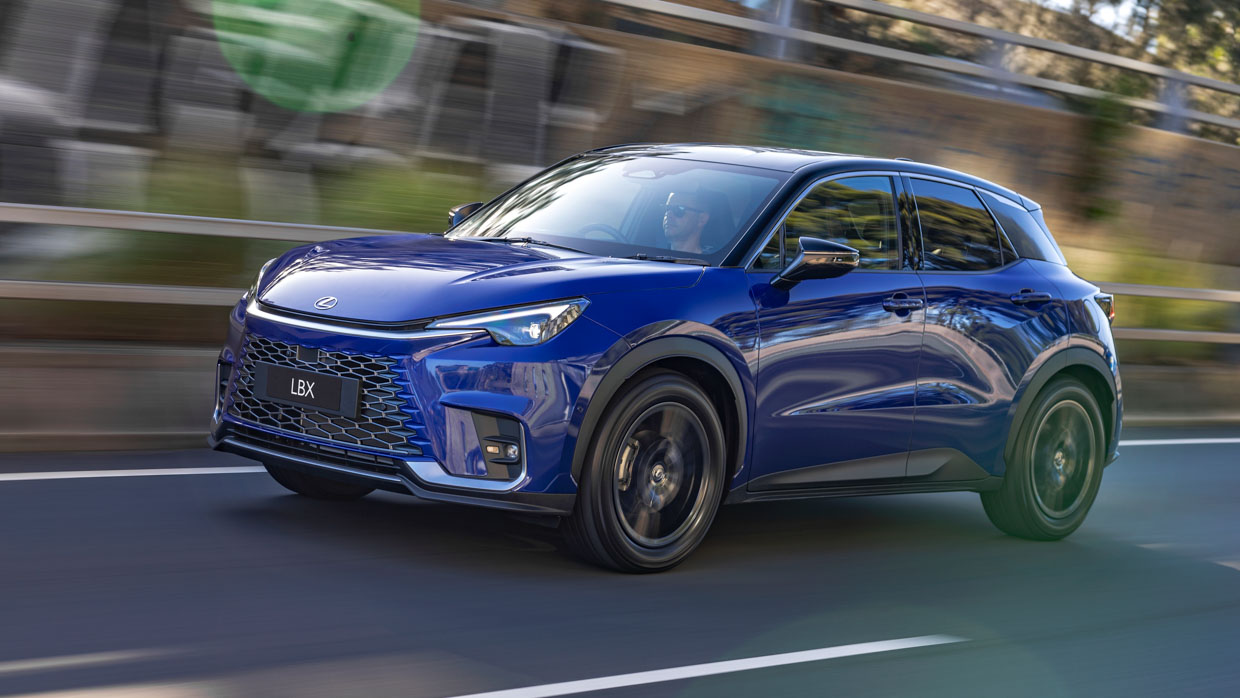
Nevertheless, initial impressions suggest the LBX is an effective handler and one that’s quite enjoyable and easy to punt around on city streets.
In terms of ride, I wouldn’t call it a plush or cushy set-up, but at least on the roads we experienced, the LBX performed a decent job at taking the worst out of most bumps.
Having been able to drive all three grades on our launch drive, the benefits of the all-wheel drive weren’t immediately apparent.
Granted, it isn’t a full-time all-wheel drive setup and the additional outputs of the rear-motor are modest, so I’m not sure whether it’s necessarily worth the additional cost over the two-wheel drive.
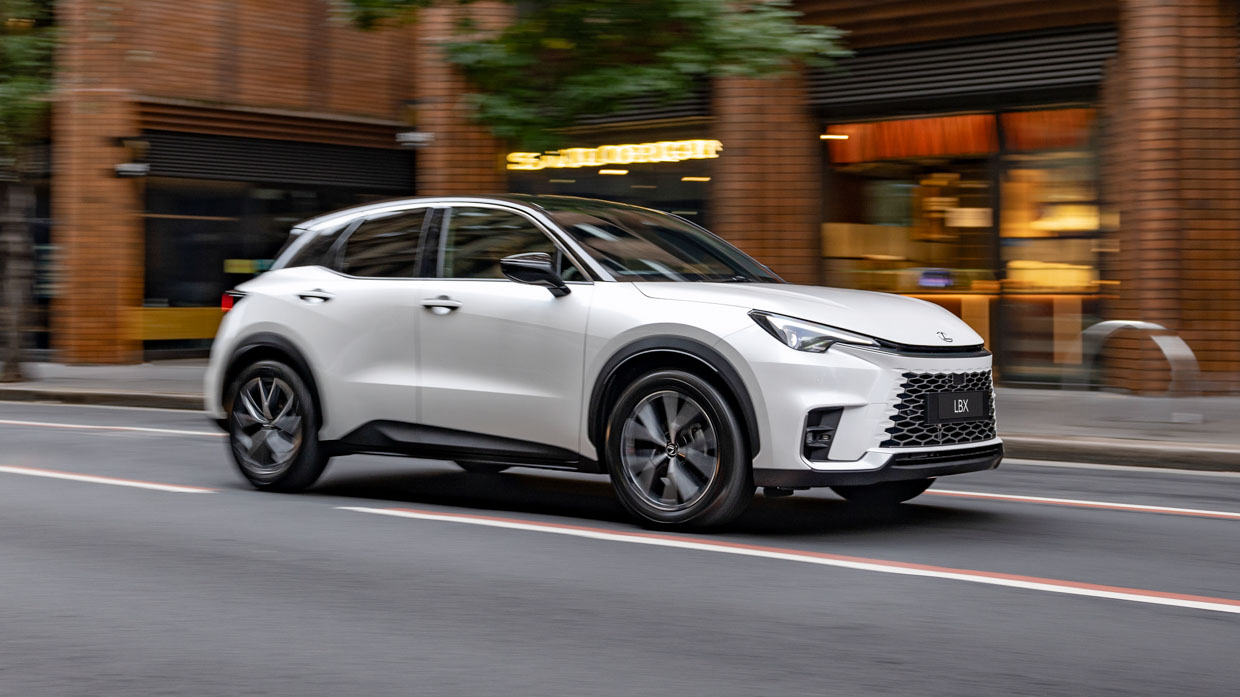
This said, the all-wheel drive does bring with it a double-wishbone rear suspension, versus the torsion beam set-up of the front-wheel drive, though all variants drive on the 18-inch wheels.
A longer drive with each variant back-to-back will be necessary to determine whether the all-wheel drive is worth it.
Regardless, the drive experience made for a positive initial impression.
While it drives pretty well, the interior is ultimately just as important in a vehicle that pitches itself as a premium Lexus, and this is where the vehicle doesn’t feel like a base-spec Toyota.
The cabin ambience and materials feel of a high quality, particularly with the suede-theme of the Sports Luxury which is layered all throughout the cabin and makes a more impressive interior impression than the leather-accented upholstery of the Luxury.
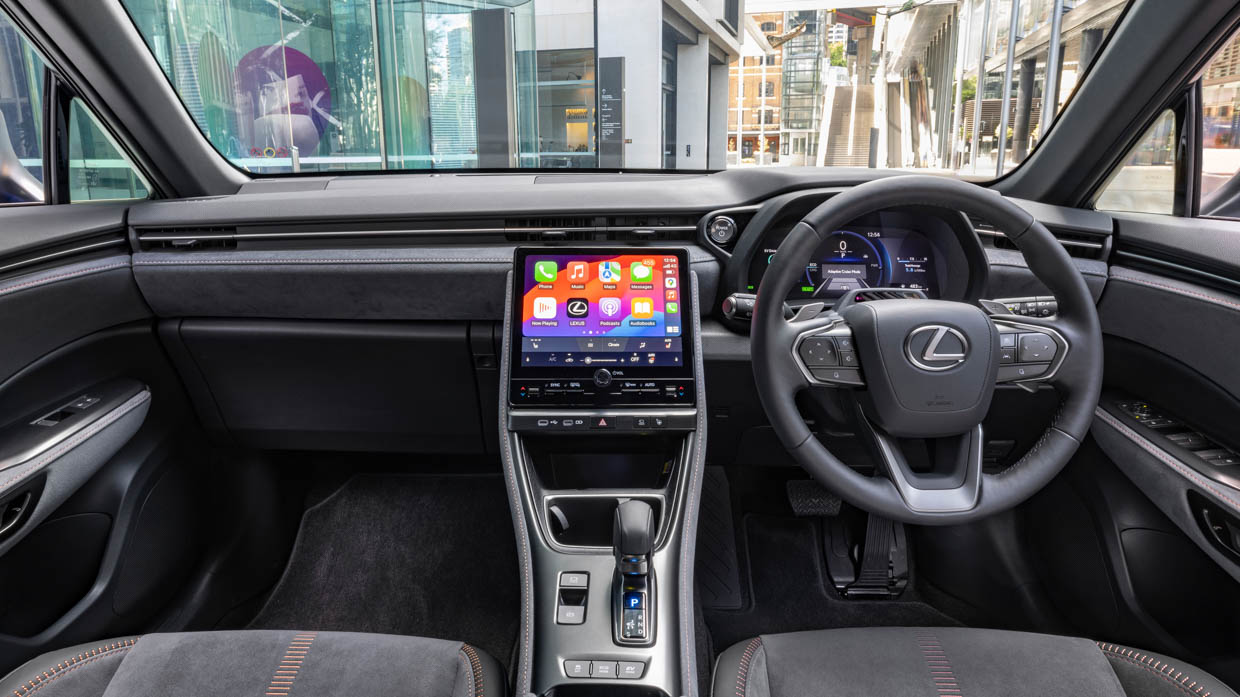
It’s quite an easy car to get comfortable in, and also appreciated that all-grades get eight-way powered front driver seats with two-way lumbar support and memory functions too.
What’s also appreciated is that Lexus hasn’t made a central touchscreen that’s dominating the cabin. Instead, it’s a 9.8-inch screen that’s really nicely integrated into the dashboard and the perfect size for the car. It doesn’t need to be any bigger.
It’s got some physical controls beneath it to adjust the temperature and volume controls, too. All of the controls have a quality feel to them, with satisfying damping and interaction. That also goes for the way the power windows go up and down.
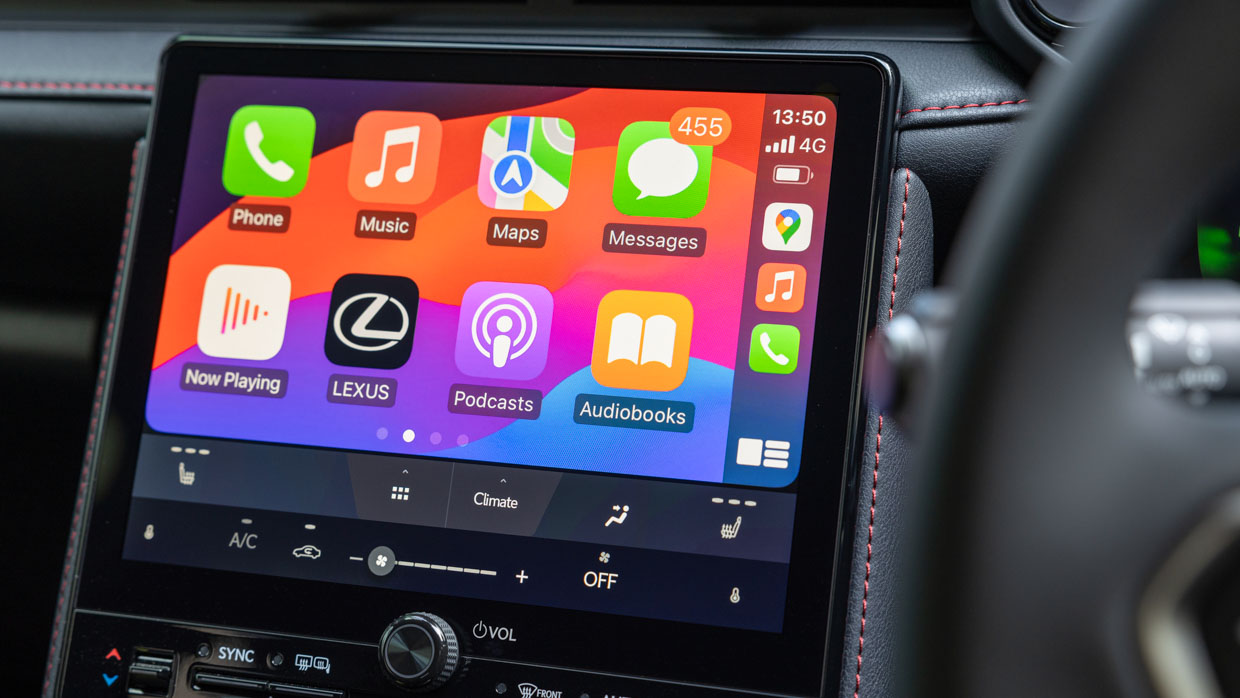
Interior space is modest. The glovebox can really only hold the car manual, though you do have a nice open storage suction beneath the centre console which is handy, underneath the wireless charging pad and two cup-holders.
While it’s quite pleasant overall in the front, the rear is a slightly different story. It’s a tight space and at 183cm I just fit behind my own driving position, though there wasn’t much if any space left. My head was also right against the C-pillar of the rear.
In terms of amenities, you don’t get rear air vents in the LBX, though you do get two USB-C connection ports. There’s also a map pocket behind the front passenger seat but not on the driver’s side, nor is there a fold-down centre armrest with cupholders.
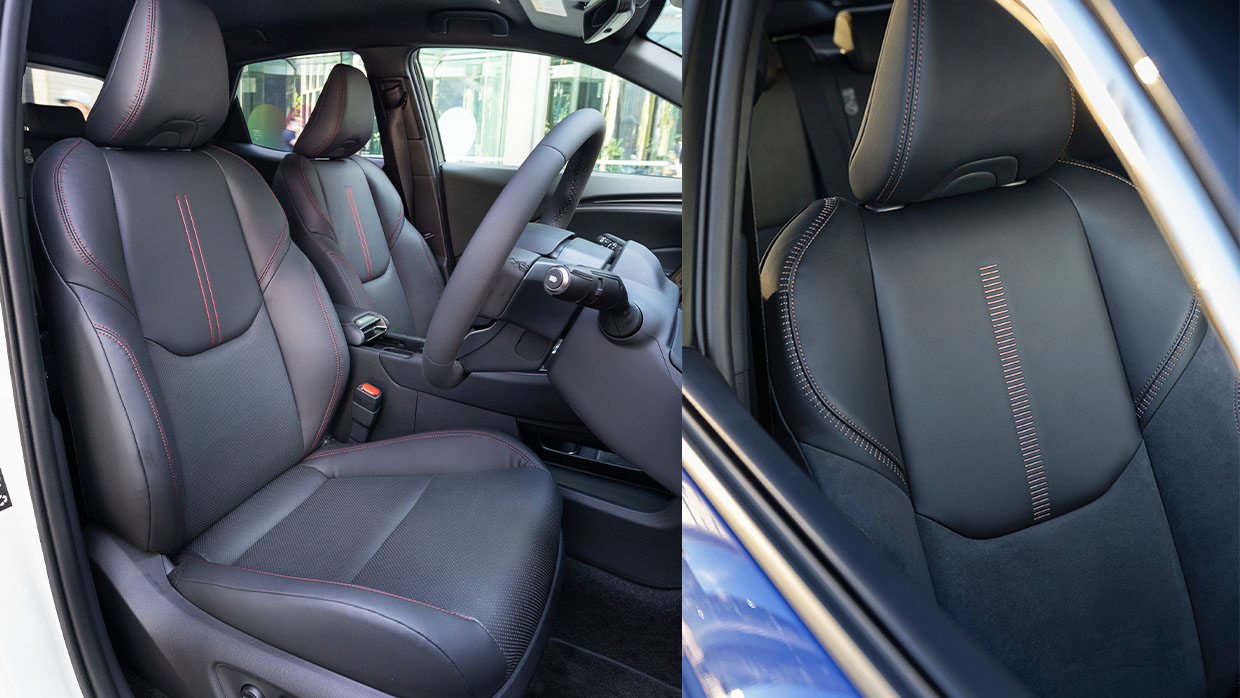
The cabin material on the top of the doors at the rear also feels a bit harder and scratchier in terms of the plastics too.
Overall, it’s not a place adult passengers would want to spend extended periods of time.
While rear passenger space is compromised, the boot space isn’t too bad. An electric tailgate is standard on all grades of LBX.

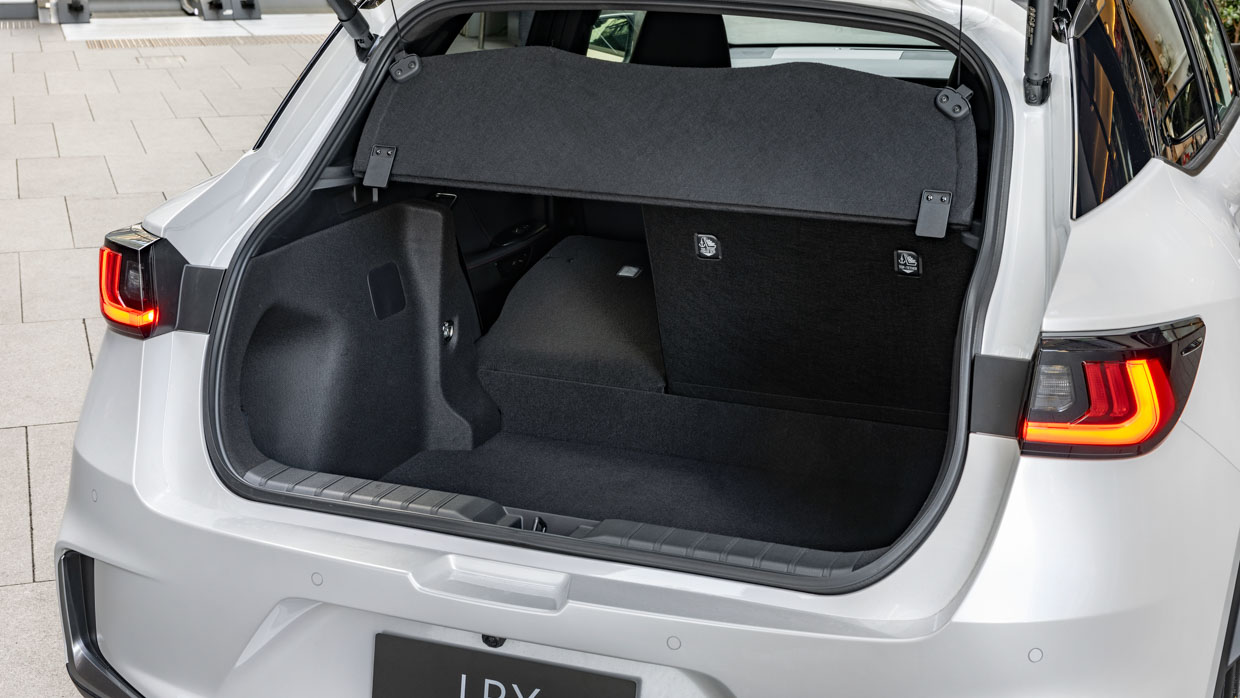
Opening it reveals a boot with 402 litres of space on front-wheel-drive variants, or 315 litres of space for the all-wheel drive. It’s not a massive boot, but it’s worth noting that it is more than both the Mazda 3 or Toyota Corolla.
The seats also fold 60/40 to reveal a maximum 994 litres of boot space in the front-wheel drive, though we weren’t provided a figure for the all-wheel drive at launch.
Unfortunately there is no spare wheel under the boot, just a tyre puncture repair kit.
The LBX hasn’t been crash tested by ANCAP, however it does come with a full suite of safety tech and driver assistance, including the latest Lexus Safety System+.
That includes features like:
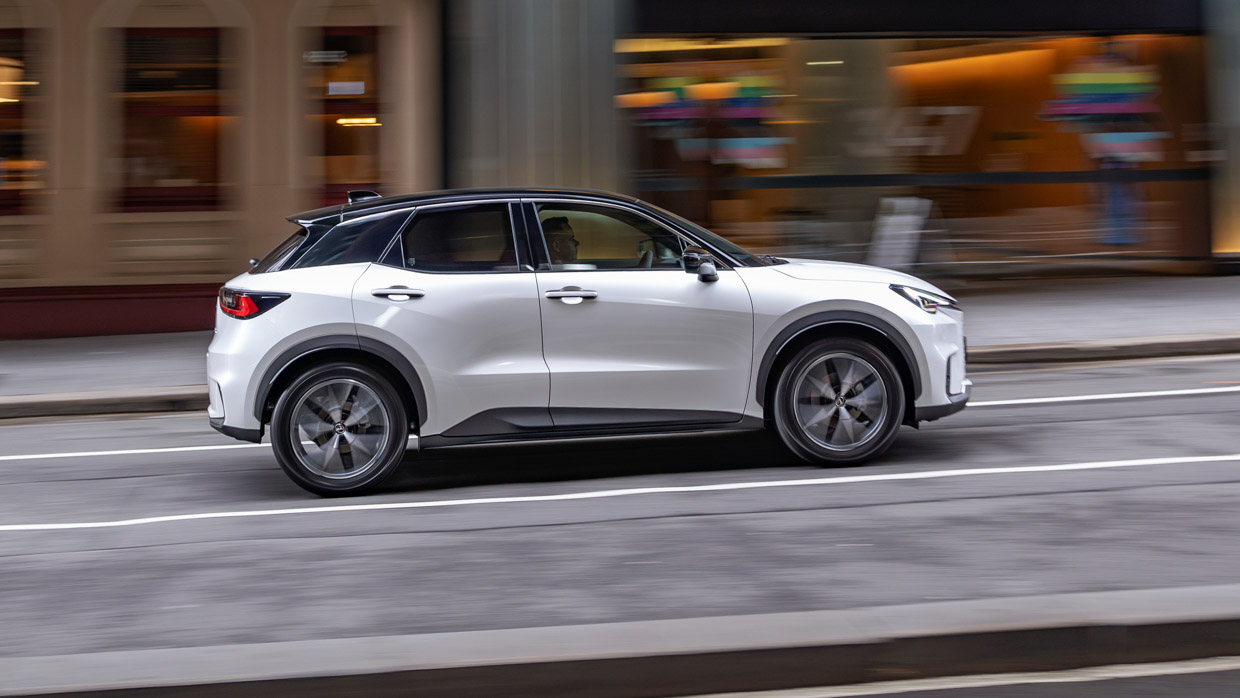
Overall the active safety systems didn’t seem too intrusive during my time with the vehicle at its local launch, though we will reserve judgement on how well calibrated they are for when we are able to test the LBX over a longer period.
In terms of running costs, the LBX can take minimum 91-octane fuel and has a claimed fuel consumption of 3.8L/100km on a combined cycle for both the front- and all-wheel drive.
On our launch drive we managed to achieve figures in the five-litre per 100km range – 5.4L/100km on the first leg of our drive predominantly on country roads, then 5.2L/100km on a mixture of country and urban roads, based on the readouts from the car’s computer.
We look forward to doing a proper efficiency test at a later date.
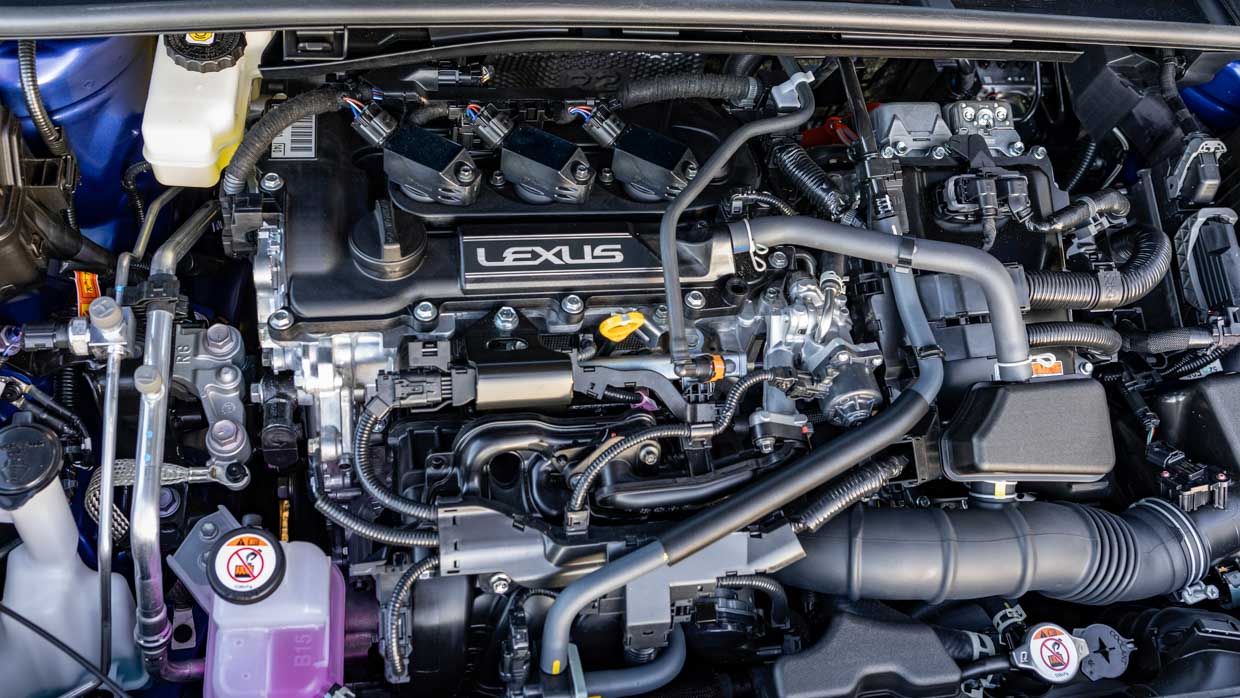
The LBX is covered by a five-year, unlimited-kilometre warranty and LBX buyers also get five years of capped price servicing, with each service capped at $595. Over five years, that’ll set you back $2975.
Service intervals are 12 months or 15,000km.
So, is the LBX ground-breaking enough to be mentioned in the same breath as the LFA?
Well, I’m not sure I’d go that far, but initial impressions are of a competent little luxury SUV.
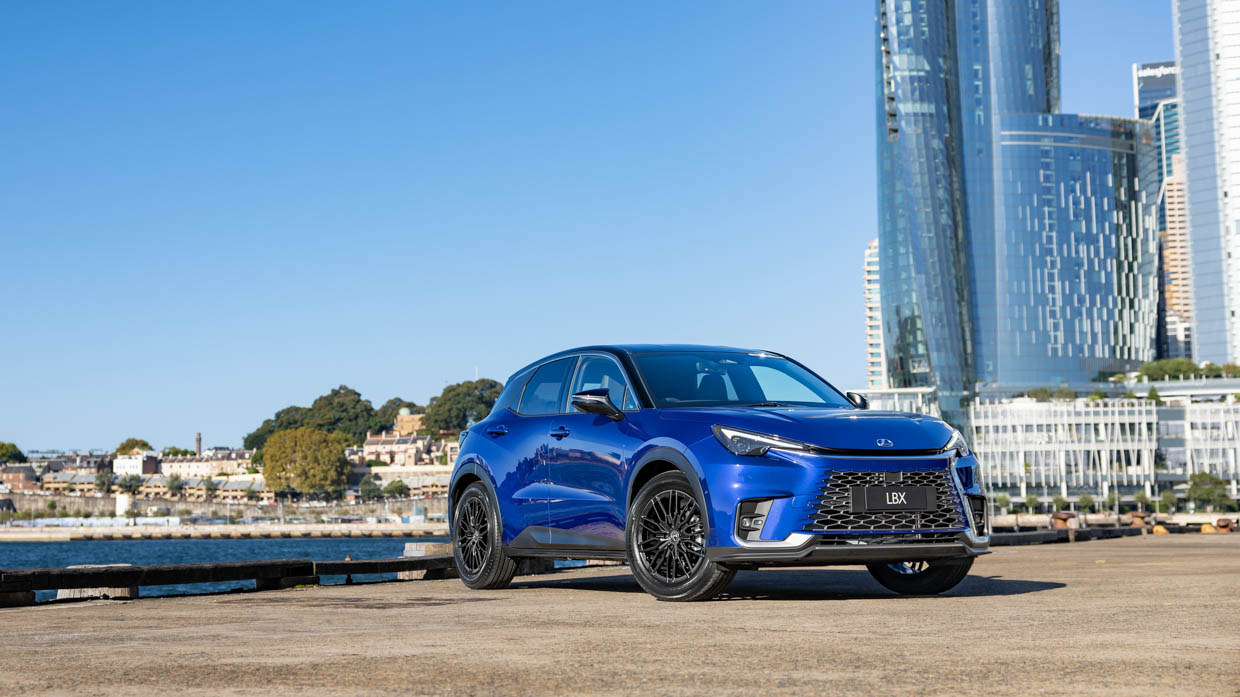
It looks good, has a nice interior, seems to handle pretty well, and will likely make sense to buyer’s after a more premium-focused urban runabout or second vehicle, so long as they don’t need to carry passengers in the back all the time.
Provided that isn’t a concern for you, but image and style are, then at this price point the Lexus LBX could even be a consideration to cross-shop against for those looking at a style-focused new-generation Toyota C-HR, which asks between $42,990 and $54,990 before on-road costs.
We look forward to getting the LBX into the Chasing Cars garage for a longer and more rigorous assessment on how it drives in a variety of scenarios, including a proper efficiency test, and to make a more definite stance on the sweet spot within the three-variant range.
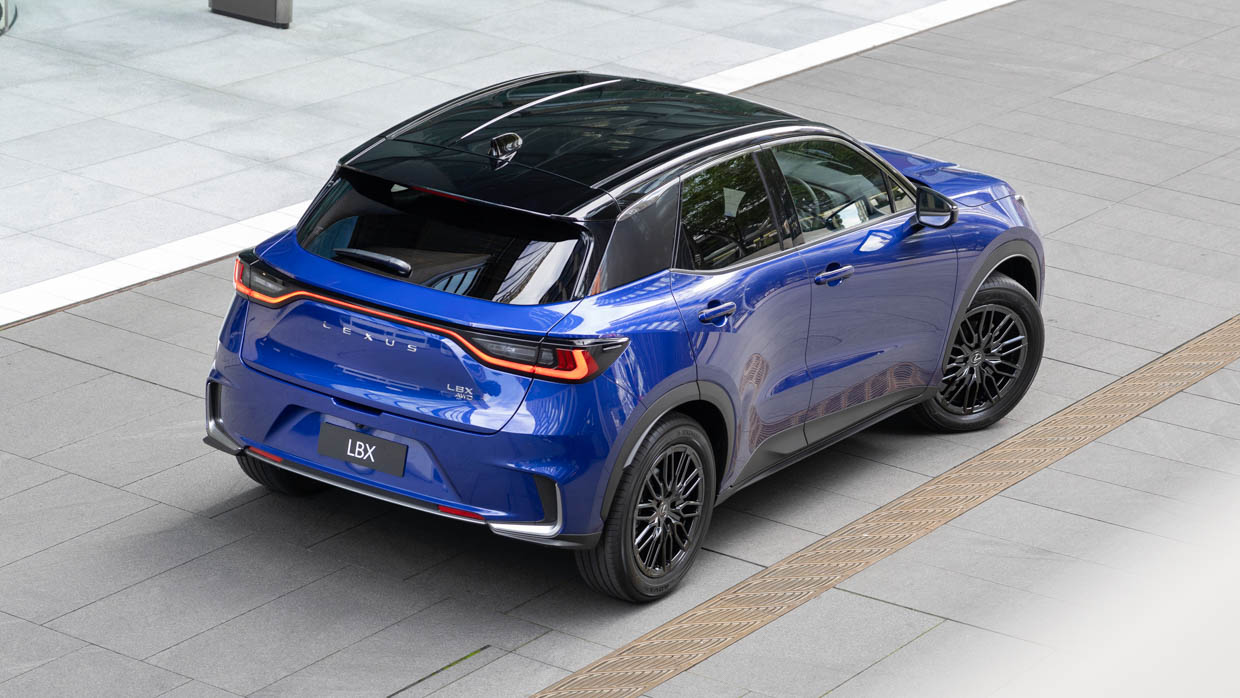
In the meantime, however, while some may criticise it for its rear-seat space, modest power outputs, and the fact it shares so much with the Toyota Yaris Cross – and also question its price tag as a result – it’s ultimately pleasing to see a Lexus with a sub-$40K asking price, not to mention a Lexus that operates in a segment which has increasingly been left behind by other premium marques.
More choice in the small, city-focused, efficient vehicle space is a good thing, and Lexus should be commended for expanding its lineup into the segment amidst a seemingly endlessly growing plethora of large big-rig SUVs.
Key specs (as tested)
About Chasing cars
Chasing Cars reviews are 100% independent.
Because we are powered by Budget Direct Insurance, we don’t receive advertising or sales revenue from car manufacturers.
We’re truly independent – giving you Australia’s best car reviews.
The estimate provided does not take into account your personal circumstances but is intended to give a general indication of the cost of insurance, in order to obtain a complete quote, please visit www.budgetdirect.com.au. Estimate includes 15%^ online discount.
^Conditions Apply
Budget Direct Insurance arranged by Auto & General Services Pty Ltd ACN 003 617 909(AGS) AFSL 241 411, for and on behalf of the insurer, Auto & General Insurance Company Limited(ABN 42 111 586 353, AFSL 285 571).Because we don’t know your financial needs, we can’t advise you if this insurance will suit you. You should consider your needs and the Product Disclosure Statement before making a decision to buy insurance. Terms and conditions apply.
Indicative quote based on assumptions including postcode , 40 year old male with no offences, licence suspensions or claims in the last 5 years, a NCD Rating 1 and no younger drivers listed. White car, driven up to 10,000kms a year, unfinanced, with no modifications, factory options and/or non-standard accessories, private use only and garaged at night.
^Online Discounts Terms & Conditions
1. Discounts apply to the premium paid for a new Budget Direct Gold Comprehensive Car Insurance, Third Party Property Only or Third Party Property, Fire & Theft Insurance policy initiated online on or after 29 March 2017. Discounts do not apply to optional Roadside Assistance.
2. Discounts do not apply to any renewal offer of insurance.
3. Discounts only apply to the insurance portion of the premium. Discounts are applied before government charges, taxes, levies and fees, including instalment processing fees (as applicable). The full extent of discounts may therefore be impacted.
4. We reserve the right to change the offer without notice.